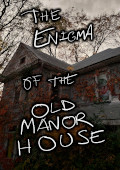The Enigma of the Old Manor House — 24 of 28
Daniel M. Stelzer
Part Tasks
A task is a kind of object. A task can be hidden, revealed, or complete (this is its status). A task is usually hidden. A task has some text called the description.
Correspondence relates one task (called the corresponding task) to one scene. The verb to correspond to means the reversed correspondence relation.
Definition: a scene is tasked if it corresponds to a task.
When a tasked scene (called the event) begins:
if the event is not confinescene and the event is not befriendscene:
if the corresponding task of the event is complete:
say "You [if the notebook is not visible]mentally [end if]un-cross a step from your plan: '[description of the corresponding task of the event]'.";
otherwise if the turn count is greater than one:
say "You [if the notebook is not visible]mentally [end if]add another step to your plan: '[description of the corresponding task of the event]'.";
now the corresponding task of the event is revealed;
now the score is the number of complete tasks.
When a tasked scene (called the event) ends:
if the event is not confinescene and the event is not befriendscene:
say "And that step ('[description of the corresponding task of the event]') is complete. You [if the notebook is not visible]mentally [end if]check it off your list.";
now the corresponding task of the event is complete;
now the score is the number of complete tasks.
A tasklist is part of the notebook. Understand "task" or "list" or "tasks" or "plan" or "plans" as the tasklist.
The description of the tasklist is "You've sketched out a basic plan:[br][list tasks].".
To say list tasks:
repeat with the item running through tasks:
if the item is not hidden:
say " [description of the item]";
if the item is complete:
say " - DONE";
say line break;
let X be the number of complete tasks;
let Y be the number of tasks that are not hidden;
say "So far you've completed [X] of the [Y] steps".
The maximum score is 7.
Last report requesting the score: say "(If you read the plan in the notebook, it'll list which tasks are complete and which remain to be done.)".
Explorescene is a scene. It corresponds to exploretask. The description of exploretask is "Explore the mansion".
Explorescene begins when the Entire Game begins. Explorescene ends when all rooms in the mansion-region are visited.
Unjamscene is a scene. It corresponds to unjamtask. The description of unjamtask is "Unjam the doors".
Unjamscene begins when a jammed door is seen. Unjamscene ends when there are no jammed doors.
Evidencescene is a scene. It corresponds to evidencetask. The description of evidencetask is "Find evidence of the ghost".
Evidencescene begins when the Entire Game begins. Evidencescene ends when the ghost is noticed.
When evidencescene ends: say "There! That's definitely something unusual! There [i]is[/i] something in here other than you, something you can't see...".
Trapscene is a scene. It corresponds to traptask. The description of traptask is "Create a [i]ghost detector[/i]: something that will make noise if the ghost messes with it".
Trapscene begins when the Entire Game begins. Trapscene ends when a room is hauntable.
Locatescene is a scene. It corresponds to locatetask. The description of locatetask is "Set up ghost detectors and use them to track the ghost".
Locatescene begins when trapscene ends. Locatescene ends when the location of the ghost is hauntable.
Confinescene is a scene. It corresponds to confinetask. The description of confinetask is "Confine the ghost somehow[if there are no ghost-viable doors] (in a container)[end if]".
Confinescene begins when locatescene ends. Confinescene ends when the ghost is tame.
Befriendscene is a scene. It corresponds to befriendtask. The description of befriendtask is "Ghost cat??".
Befriendscene begins when confinescene ends. Befriendscene ends when the ghost is friendly.
When play begins:
say "Everyone's heard stories about the old mansion on the hill. Decades ago, they say, old Doctor Black lived up there all alone. Until something happened[--]nobody knows what[--]and he vanished without a trace. The house belongs to the Historical Society now, it's turned into a little sort of local museum. But the south wing has always been closed to the public, and they say that's where it happened. Where he was murdered.[p]You don't really [i]believe[/i] in the ghost stories any more, of course. You're too old for that. He probably just had a heart attack. But it [i]is[/i] Halloween coming up, and Abby started telling the story, and you'd read that book and you told her it sounded like a [i]poltergeist[/i], a ghost that throws things around. Which means it has to be real and physical, right? Something you could find and trap.[p]And then Dylan made it a [i]dare[/i] and nobody wanted to back down. And that's how you ended up here, in the dead of night on Halloween, prying one of the boards off the window next to the door and squirming your way in.[p]None of the others showed up. But you are [i]not[/i] afraid of ghost stories, and you are [i]not[/i] going to chicken out like your friends did. One way or another, you're determined to find out the truth, just like the detectives in the books always do.[p]Welcome to..."
